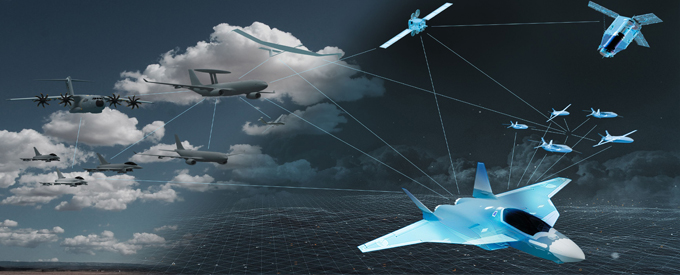2020-06-07
European Project Works to Provide Decisive Advantage to Future Aircraft
It was recently announced that Indra will lead the European CROWN R&D project that will equip European fighters and aircraft with various capabilities. These include radar, communications and electronic defence to dominate radioelectric space and operate at an advantage over the enemy.
The company will coordinate the work of a consortium formed by Thales, Office National D’Etudes et de Recherches Aerospatiales (ONERA), HENSOLDT, Fraunhofer-Gesellschaft, SAAB, Totalforsvarets Forskningsinstitut (FOI), Netherlands Organisation for Applied Scientific Research (TNO), Leonardo, Elettronica, and Baltijos Pazangiu Technologiju Institutas (BPTI).
The project has been selected to form part of the Preparatory Action for Defence Research of the European Commission managed by the European Defence Agency and the grant agreement is now being prepared.
Collaborative Effort
This group of companies and research centres from seven countries will design the first element capable of integrating radar, electronic defence and communications equipment into a single compact and lightweight item of equipment that can be installed in the aircraft nose cone, camouflaged in the fuselage, or in an under-wing pod, on multiple platforms (even in UAVs). It will be a system based on active electronically scanned array (AESA) and algorithms that will enable multi-purpose use for different capacities.
No other country as yet possesses this capability, so it will bring an advantage to whoever acquires it first. This integration will enable the aircraft's radar to intelligently select the least congested area of the spectrum to operate effectively and extend its range, even in environments where the adversary tries to interfere with its operation.
Coordination of the radar with the systems that monitor the radio spectrum and those that generate countermeasures (ES/EA) will improve the performance of these systems and of aircraft weapons systems in general. As for communications, they will gain range and bandwidth to exchange a greater volume of data with other platforms at higher speeds.
The ultimate goal is to equip the aircraft of the future with a compact solution, make it smaller in size, with a lower weight and cost, and more power to provide a decisive advantage. On this will depend the ability to detect the enemy, select and fix targets and exchange data with other platforms on land, sea or air to prevail in combat or protect themselves from attack.
Electronic defence has been placed at the centre of military strategy in recent years as some countries resort to controlling radioelectric space as a way to counter the superiority of European and allied aircraft.
The CROWN project could subsequently address the adaptation of this system for use by ground units and all types of land vehicles and ships.
Spanish Industrial Coordinator
The Spanish Government has appointed Indra as the national industrial coordinator in the European Defence Program FCAS (Future Combat Air System), reportedly the largest joint European Defence programme to date and an ambitious one in terms of technological development. Indra will carry out this work together with the industrial leaders appointed in turn by France and Germany, Dassault and Airbus, respectively.
The aim of the project is nothing less than an air defence system for Europe that, starting from 2040, will gradually integrate with and then later replace current platforms such as the Eurofighter and Rafale. The German and French governments made the decision in 2017 to develop the system together, with Spain becoming the third FCAS partner country in 2019. The goal is to encourage further European countries to take part, transforming FCAS into a truly pan-European project. Should this be successful, then FCAS could be a catalyst for establishing a joint European security and defence policy for the future.
FCAS is special because it will be far more than 'just' a combat aircraft. Manned next-generation jets will form integral elements of a complex and fully networked 'system of systems'. Unmanned components known as remote carriers will act as 'loyal wingmen', protecting the pilots and supporting them in combat missions. Open system architectures will also enable existing platforms to be integrated into an FCAS. At the heart of the system is an air combat cloud, which provides relevant information in real time.
The company is also participating in the proposals for nine EDIDP consortiums (European Defence Industrial Development Program) that are being evaluated and acts as coordinator in three out of five consortiums led by Spain, among others, the PESCO programme for Strategic Command and Control, in which Spain, Italy, Germany, France, Luxembourg and Portugal participate.
Reference Text/Photo


No Comments